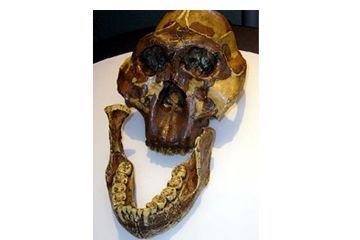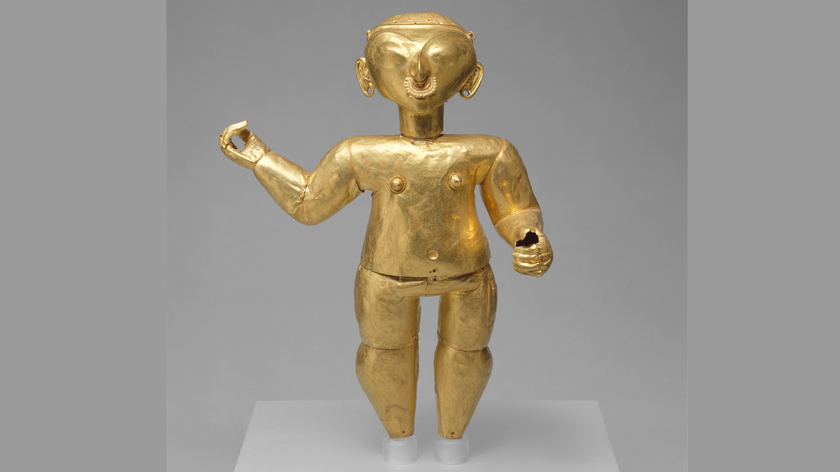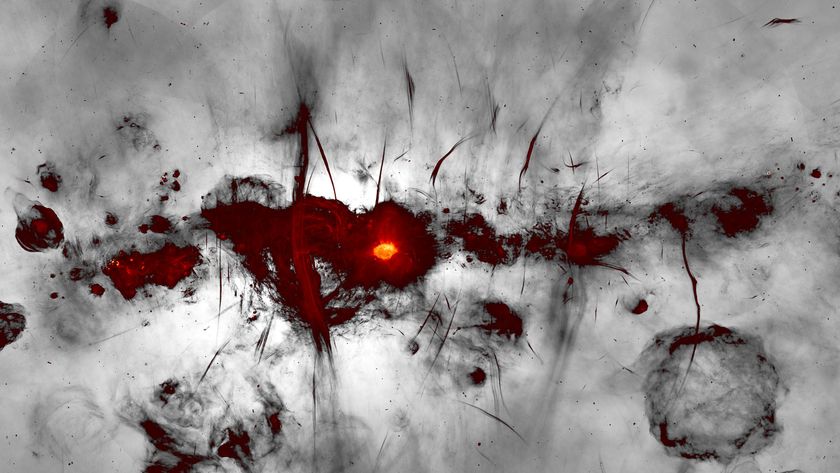
(ISNS) -- Ancient human ancestors ingested tiny rock particles found in soil and dust along with the plants they ate, wreaking havoc on the tough tissue layer protecting teeth, scientists said.
The finding, published online in the Journal of the Royal Society Interface, could have implications for interpreting the diets of fossil mammals, including hominins, a group that includes modern and early humans.
The study also found that phytoliths, hard particles produced by plants in mimicry of natural grit, might not be as bad for teeth as previously thought.
"We agree that phytoliths can mark enamel, [but] we don't think they're responsible for removing tissue from it," said study leader Peter Lucas, a dental anthropologist at Kuwait University.
Gary Schwartz, an enamel expert at Arizona State University's Institute of Human Origins, praised the study for actually testing a common scientific assumption among anthropologists: that food items cause small-scale damage on teeth, which over time scratches and pits the enamel, wearing it down to the point where the teeth are no longer protected and begin to erode.
"This study shows pretty nicely that [phytoliths] just aren't hard enough to do that," said Schwartz, who was not involved in the study.
To investigate the effect of quartz on enamel, Lucas and his team mounted single microscopic particles of the mineral onto titanium rods and rubbed them across an orangutan tooth, which had been polished to remove earlier traces of wear.
Sign up for the Live Science daily newsletter now
Get the world’s most fascinating discoveries delivered straight to your inbox.
The scientists found that even a single pass was enough to chip enamel. What's more, the mechanical forces needed to cause damage were tens of thousands of times lower than those typically used for chewing.
Under the same conditions, phytoliths were far less destructive. The plant particles could indent the enamel but not fracture or scratch it. The team likened the marks left by phytoliths to what might be created if you were to press your fingernail really hard into a wooden desk.
"It may still be that phytoliths still make it unpleasant to eat because you're causing changes to your tooth, but it's not like they are the primary thing causing your teeth to disappear," said study team member Amanda Henry, a physical anthropologist at the Max Planck Institute for Evolutionary Anthropology, in Leipzig, Germany.
The team said that the experimental findings could help resolve a mystery surrounding the fossils of an ancient hominin known as Paranthropus boisei.
Living in East Africa about 2 million years ago, P. boisei was large and seemed uniquely adapted for eating hard foods, such as nuts and tough plants. It had thick jaws, powerful chewing muscles, and the thickest enamel of any known human ancestor.
Based on P. boisei's specialized morphology, or form, scientists have speculated that the hominin's diet consisted of robust foods that required lots of crunching and chewing. This idea is supported by the condition of its fossilized teeth, especially the molars, which appear to the naked eye to be considerably worn and flattened in adults.
However, when viewed under the microscope, the surface of P. boisei's teeth appears to be only lightly worn. Absent are any signs of the kind of extensive surface damage that would be expected if it were eating tough, enamel-destroying foods such as uncooked tropical grasses, nuts, and tubers on a daily basis. It would be like stumbling upon a car that appeared to have been in a major accident, yet its paint was largely undamaged.
The discrepancy between the microscopic and visible state of P. boisei's teeth "has been a kind of conundrum," Lucas said.
Some scientists have even suggested that P. boisei's robust features were a kind of evolutionary fallback mechanism, to be used only when its preferred food – fruits, perhaps – was scarce.
But based on their findings, Lucas and his team propose an alternative hypothesis. Perhaps, they said, the wear on P. boisei's teeth was caused by drought or by sand carried in by seasonal winds from the Arabian Peninsula.
"It would mean you're seeing the environment and not the diet," Henry said.
Quartz particles in the sand could have coated P. boisei's food sources, pitting and abrading the enamel when consumed and eventually leading to tooth wear. Later, when the storms were over, these signs of damage would be scoured away by markings left by phytoliths.
"Over a short period of time, you could lose a lot of [enamel], and it could then be masked by eating a lot of plant tissue later," Lucas explained.
Schwartz said the new findings suggest "we may need to be more clever in reconstructing diets in the fossil record."
Henry said the results could have implications for living mammals as well. However, Henry added that more studies are needed to understand how applicable the findings are to the real world.
"The scale that we're talking about here is tiny," Henry said.
Ker Than is a freelance writer based in Southern California. His stories have appeared in numerous national outlets.
Inside Science News Service is supported by the American Institute of Physics.











